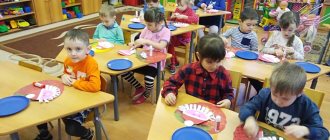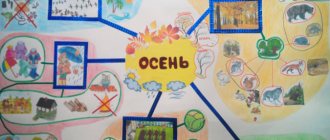Recommendations for conducting a conversation in the first junior group
- Sufficient provision of visibility . A conversation without illustrative material turns into a verbal technique in its pure form, which for children 1.5–3 years old does not give clear ideas. Moreover, over time, this practice will teach the children to talk about things about which they have no figurative idea.
- Patience. If the teacher knows for sure that the children’s experience allows them to answer the question posed, it is not worth giving the answer for the kids in the name of maintaining timekeeping. It is better to ask leading questions so that the children have the opportunity to experience a situation of success by answering correctly.
- Less is more. Do not overload the conversation with long monologues and a large amount of information. This will cause nothing but fatigue in children. Do not forget that children aged 1.5–3 years cannot live without games.
- Inclusion of everyone, not just active ones. Often the teacher involves only initiative children in the work. Meanwhile, a shy child can be drawn into a conversation with encouragement, even if he repeated the answer given by another child: “Well done! You noticed it too!” It is important not to be distracted in conversation by naughty children. They need to be placed closer to you and ask questions more often, making sure to note the key points in their statements.
Shy children should also be included in the conversation along with active ones.
- Conversations (especially situational ones) on the topic of KGN should not be started with reproaches, like: “Just look at your noses!” - and long maxims about how no one has headscarves, the pupils do not know how to blow their noses, use a washbasin, etc. The first reaction of the kids will be to squint their eyes towards their noses in order to see the object of the adult’s dissatisfaction, but the teacher’s only goal was to lead the children to that you need to wear handkerchiefs. When asked the final question: “So what should you bring tomorrow?” the guys will list everything they want, but they may never get to the scarves. Therefore, it is more appropriate to start with the introduction of the guest - Petrushka, with whom the toys do not want to be friends, because he does not know how to use a handkerchief. And then tell you step by step how to avoid ending up in a similar situation for the kids themselves.




